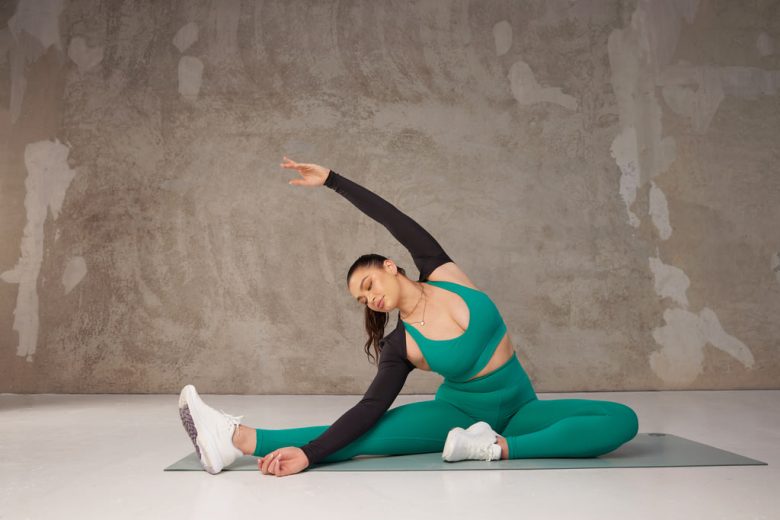To maintain movement throughout your life, it is important to exercise daily. However, staying fit goes beyond just going to the gym or running—the scope of fitness encompasses mobility training. Mobility training is one of the most vital for fitness, strength, and endurance. Mobility training has become increasingly essential because of its ability to enhance performance, optimize independence during aging, and, nd most importantly, avoid injuries.
This article serves as a guide to help you understand the importance of mobility training, its essentials, and how to shift seamlessly to focusing on mobility training as a fitness goal. The article is all-encompassing, ranging from the distinction between mobility and flexibility to advanced techniques and best practices.
Mobility Versus Flexibility:
Before going forward, one should be familiar with the terminology ‘flexibility’ to make the most sense out of ‘mobility.’ Flexibility can easily be defined as the range of motion that exists in the muscles or joints—for example, the range of motion that exists in the hamstring is when one is seated. By contrast, mobility is active and measures the motion available for a joint or limb from one position to another. Stretching is not the only activity associated with mobility; it is dynamic and involves movements such as those done while exercising.
Someone might be able to reach down and touch their toes with ease, however, they may be unable to do a deep squat without discomfort. Mobility training pays attention to body movements, stabilizing muscles, and strength to enhance the performance of one’s body and the greater offending area.
The Key Benefits of Mobility Training:
Mobility training helps to mitigate stiffening of the joints, but its advantages are not restricted to physical exercises. Reducing the chances of injury is one of mobility training’s greatest benefits. Joints that have been well oiled and processed are at a significantly lower risk of straining, spraining, and overuse injuries. Athletes have been known to resort to mobility techniques when trying to improve their performance without damaging their joints.
Improved performance is another benefit. Performing physically demanding tasks like lifting weights, doing yoga, or participating in sports structures the biomechanics of the body, where increase in mobility becomes a cornerstone. It makes one stronger and more efficient. Regardless of the type of exercise performed, be it yoga or sports, mobility augments effectiveness. Mobility enhances everyday activities as well, such as climbing, grocery shopping, or bending down to pick something up. This ensures that the individual remains agile even as they grow older.
Finally, mobility training can help alleviate the many negative impacts of modern sedentary lifestyles. Prolonged sitting leads to hip flexor tightening, glute weakness, diminished ankle mobility, and subsequently, poor posture and discomfort. The incorporation of mobility practices can mitigate these habits and foster ease of movement and comfort.
Essential Mobility Exercises For Beginners:
If you are new to mobility training, beginning with essential foundational exercises is recommended. Concentrate on the already mentioned problem areas: the hips and shoulders, as well as the ankles. Some effective arm movements to help increase your mobility include arm circles, cat cow stretches, and hip openers. Furthermore, activities such as bodyweight squats and controlled lunges, where one can test their mobility and stability, also fall under this umbrella.
Beginners should prioritize consistency over intensity. Even devoting just 10 to 15 minutes a day to mobility-focused exercises can positively impact one’s movement and body feelings. Most importantly, take things slow and listen to what your body is saying to avoid going too hard, too fast.
Mobility Training for Strength Athletes:
A powerlifter or CrossFit enthusiast is an example of a strength athlete. As for mobility training, it is part of the lower body exercises for strength athletes. Not having enough mobility can easily compromise one’s lifting mechanics, which is likely to lead to injury and compromised performance. One example is hip and ankle mobility, which must be sufficient to allow for a deep squat. Possible hip and shoulder mobiliensuresure that a lifter maintains good alignment while performing the overhead press or the bench press.
Strength athletes can reach the peak of their power while sidestepping suboptimal compensatory movements that could lead to damage over time. They can use dynamic warmups and movement prep to enable better theraband and bone rolling as well as joint-specific drills to make mobility work less monotonous and, therefore, more efficient.
Mobility Training for Longevity:
Reducing the amount of exercise one does as they age is one of the most effective ways to maintain independence. Practicing mobility regularly is encouraged as it helps keep one’s joints healthy, minimizing risks of chronic problems down the lin, such as arthritis, joint stiffness, and injury. They also facilitate better mobility and even posture, reducing the risk of falling as one ages.
The most appealing feature of mobility training for longevity is that it can be tailored to suit any level of fitness. From three decades of age to 70 years, no one is restricted from working on functional movements such as lunges, spinal rotation, hinges of the hips, and others. It helps them accomplish daily activities without restrictions. It is important to note that it is not the duration of life that matters but the quality and handling of life itself.
Mobility Training Errors You Probably Didn’t Even Know You Were Making:
While it might sound simple in the beginning, mobility training is much more complicated and carries challenges of its own. One of the biggest problems one may encounter is skipping exercises, which may lead to a lack of proper form. The speed that is required in mobility work should not be present in the control of needed body parts. The reason behind moving too fast demonstrates inadequate increase of stability towards joints.
Not feeling tight anywhere does not mean overlooking the area, and this is what some people do. Focusing on the flexors of the hip is one example that is as valid as ignoring the hamstring area, while these together allow movement and should not be disregarded. It is sensible to tackle every part of the body instead of focusing on single areas and eexpectingeffectiveness.
Inconsistency is the last point to discuss; lack of consistency leads to lack of results. Regular focus on mobility work gives evident benefits, but half-hearted approaches won’t help. A deal must be set such that hourly or daily mobility training is treated as vital to exercise.
Adding Mobility Training to Your Routine:
As with everything involving fitness, mobility has its unique place within an exercise program, and it can be added in a variety of ways. As a starting point, adding a dynamic warm-up centered on mobility before a workout will enable better performance and is a good start for your body. Alternatively, you can have dedicated days that are solely mobility-oriented or finish a workout with a short mobility recovery session.
Mobility training requires as much time as one is willing to give, thus making it accessible all the time. To illustrate, yoga, stretching, or even pilates are great ways to enhance movement skills. So long as you tailor your set objectives to the available time and remain self-disciplined, the rewards can be big over time.
Mobility Training as a Tool to Enhance Life:
Performing mobility training isn’t merely to make mobility easier today, but it is something that can be leaned on later for years down the line. Blocking a few minutes away from daily workouts for range of motion exercises and taking care of joints can help people boost many aspects of life, including hitting PRs at the gym or spending time actively with kids or even grandkids in later years.
Mobility, remember, is a journey, not merely a destination. You should always start with small steps while being consistent and celebrating the progress along the way. Collaborate with professionals when looking to advance mobility training, as they can assist in crafting a tailored plan designed for your needs. MCommitmovement, and your body will be grateful.
FAQs:
1. How often should I perform mobility training?
If you are only using brief mobilization work, aim for 10–15 minutes of mobility work daily for 2-3 sessions a week. Longer sessions are great, too.
2. Do I require special tools for mobility training?
No. While resistance bands can assist, most exercises can be performed without equipment, relying solely on body weight.
3. Can mobility training replace stretching?
Mobility training and stretching serve different purposes; mobility training strengthens movements while stretching enhances agility.
4. Is mobility training suitable for beginners?
Of course. Mobility training can be simple for starters, so you can begin with easy exercises before advancing to more complex activities.
5. How long until I will begin seeing results with mobility training?
With mobility training, a sizable portion of people notice an improvement in posture and overall movement within just a few weeks. However, results are not universally standard, as they can vary from person to person.




